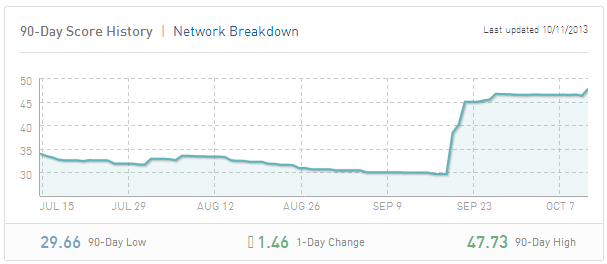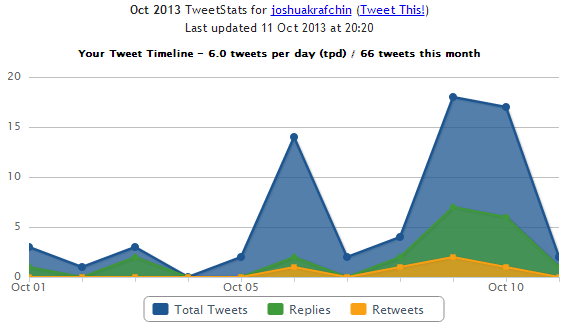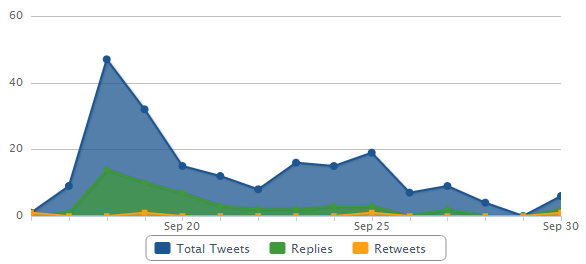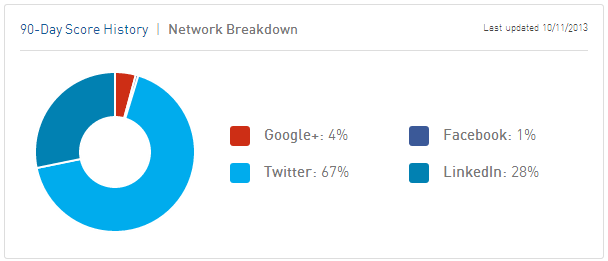This is a guest blog post by McKay Allen, Inbound Marketing Manager, at LogMyCalls. Not only has he spoken at SMX, SES, Social Media Strategies Summit, etc., but he is one of the most adventurous, talented and creative marketers we’ve met. The technology and techniques described in this post deserve serious consideration in your analytics suite.
-Josh Krafchin
Most digital marketers track their metrics fastidiously. A lot of marketers could probably instantaneously recallRead more…
Continue reading >This is a guest blog post by McKay Allen, Inbound Marketing Manager, at LogMyCalls. Not only has he spoken at SMX, SES, Social Media Strategies Summit, etc., but he is one of the most adventurous, talented and creative marketers we’ve met. The technology and techniques described in this post deserve serious consideration in your analytics suite.
-Josh Krafchin
Most digital marketers track their metrics fastidiously. A lot of marketers could probably instantaneously recall landing page conversion rates, unique visitors, daily White Paper downloads and ecommerce transaction data. Heck, most could probably easily locate data about on-site behavior, bounce rates, funnels, goals, conversions and even page flows.
And this obsession with data is a good thing. Marketers make better decisions when they have more data. Recent IBM research found that companies that gather a lot of marketing data and business intelligence have 40% higher revenue than direct competitors that admit to gathering fewer analytics.
But, here’s the problem: the black hole in many ROI calculations is phone calls. Most marketers—particularly agencies—are not getting credit for the calls they produce.
Calls Matter
A Google study released in early October 2013 found that 70% of local mobile searches result in a phone call. (That’s up from 53% just 12 months ago).
Businesses receive over 30 billion phone calls each year.
And they’re good calls, too. BIA Kelsey research found that 68% of businesses say calls are the best leads they get. And, stunningly, it takes 4 web leads to produce the revenue of 1 phone call. (Read that one more time….wow).
Phone calls matter. And, because of mobile search, they matter even more than they used to.
So here’s the question: if deep analytics are so important and phone calls are so important…where are the deep call analytics?
The Case for Deep Call Analytics
SMBs, agencies, and enterprise-level companies use call tracking to determine which ads, keywords, and campaigns generate phone calls and which don’t. In other words, call tracking can tell you how many calls are coming as a result of organic search traffic, specific PPC ads, direct mail campaign or any other marketing activity.
Call tracking tells you which marketing channel generated phone calls.
That’s good.
But our message is that this level of call analytics isn’t enough. It isn’t deep enough. It certainly isn’t as deep as the web analytics tools you’re used to using.
A lot of important things happen after the phone rings. Gartner says there are 420 billion words spoken on business phone calls every day. That’s a lot of data that isn’t being analyzed.
So, that’s why we launched Conversation Analytics, to analyze that data…those words.
Conversation Analytics: The Awesomeness Revealed
Basic call tracking, as we said above, tracks what happens before the phone rings. Conversation Analytics analyzes what happens ON the call.
Conversation Analytics actually ‘listens’ to the call with sophisticated speech recognition technology and then analyzes the call with hundreds of simultaneously running algorithms. These algorithms are looking for specific phrases, words, intonations, speech rate and context. Conversation Analytics can extract data like lead score, sales readiness, missed opportunities and dozens of other things.
For example, if the caller said ‘I need to come in for new tires tomorrow,’ that would be a good indicator of a sales ready lead.
Again, it does all of this based on the words and phrases that are actually said during the call.
Here are a couple of use-cases for Conversation Analytics.
– Agitation – Based on the words said on the call, Conversation Analytics can determine if a customer was agitated. It looks for specific words and phrases, increase in volume, higher rate of speech, and other telltale signs of an agitated customer. If Conversation Analytics determines a caller was agitated, it could immediately trigger a text message sent to a manager alerting them of the situation. Or, it could send a Webhook to a CRM changing the prospect status and triggering a new workflow or call back. Or, it could fire a Webhook to a marketing automation platform sending an apology email to the prospect. Or, an alert could be sent to your CRM that mandates that the lead receive an immediate call back.
– Lead Score Reports – When Conversation Analytics determines that a caller was a really high quality lead—again based on the words the caller said during the call—you’re going to want to see that data. You could see how many callers had a high lead score each month, day, week or year. You could even see which campaigns, ads or keywords are producing the highest quality leads.
Keep in mind that calls are more valuable than web leads, and they’re becoming ever more common (even for ecommerce and B2B companies). So, why wouldn’t marketers want deep analytics on phone leads similar to the deep analytics they demand for web leads?!
Conversation Analytics fills the blind spot you need to provide a full picture of your ROI. And, as you can see, the technology is incredibly cutting-edge and cool.
To learn more about Conversation Analytics download The Quick Guide to Conversation Analytics.
...Read less



